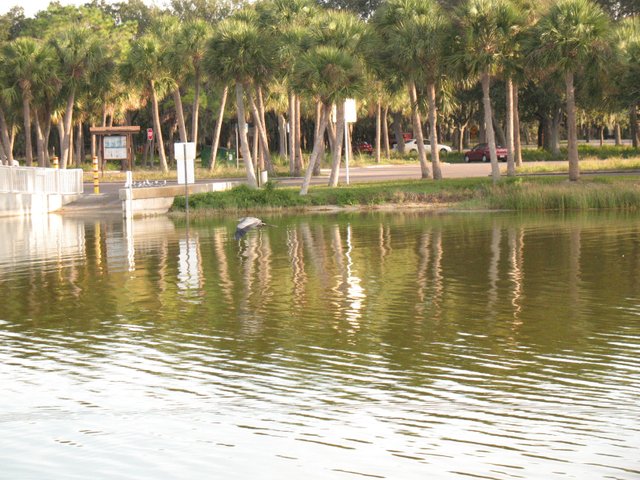
I first started Nordic walking about twelve years ago, when there was a resurgence in its popularity, and yet still today, if I ask someone if they have ever tried Nordic walking, I am usually met with blank stares.
Nordic walking was developed in Scandinavia as a way for downhill skiiers to stay in top shape during the summer months, and it is a great exercise, as it not only burns 40% more calories than walking alone, but gives you a great upper body workout at the same time.
@Mariannewest wrote a post on getting back into hiking, which reminded me of how much fun I had while Nordic walking in and around Seminole, Florida, where I lived at the time.
I got seriously into Nordic walking following my divorce, in 2005, and between that and yoga, each of which I did on average three days a week, I lost over forty pounds in about six months, without changing my diet. I was also far more toned than I had been in years.
Naturally, I got a lot of lighthearted questioning regarding "Where's the snow?," but my usual response was to tell them that obviously they hadn't paid enough attention to the Weather Channel, and our recent blizzard warnings. Of course, this was typically in 90 degree heat with 90% humidity, so needless to say my pronouncement was usually net with laughter.
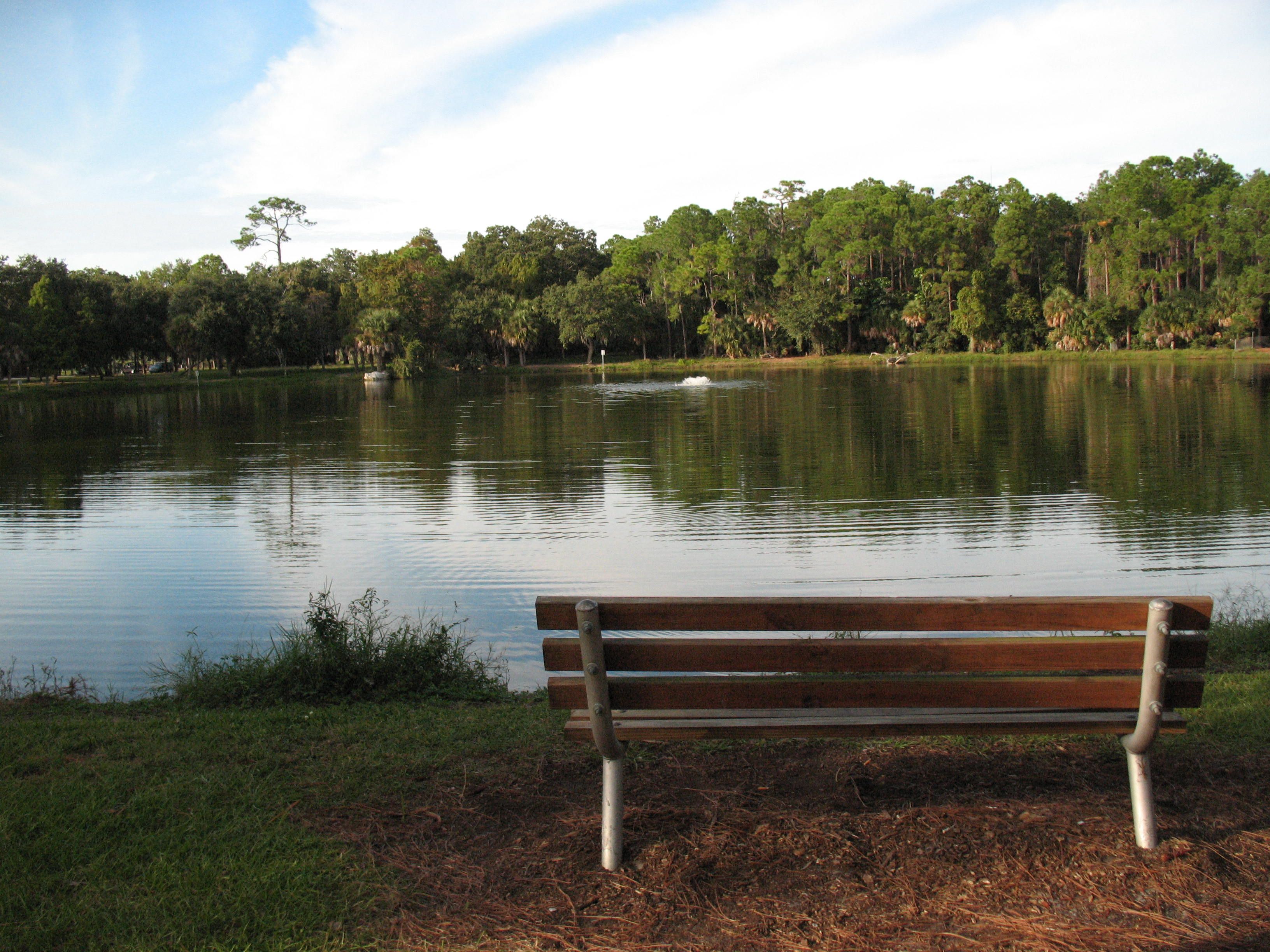
There was a back entrance to Lake Seminole Park almost exactly a mile from my house, and there was a choice of one-mile or two-mile measured trails,which were a godsend as they were shaded much of the day. Since I almost always chose the two mile trail, I walked an average of four miles each time I went, and often more, as I wandered through the park.
The basics of Nordic walking are that you strap the poles to your hands, which makes the pumping action of your hands possible without dropping the poles, as you partially release your grip as you move each pole forward, and then grip tightly as you push down and backward on the pole, to help propel you forward.
For example, you would place the right pole on the ground, as you step down on your opposite left foot, and simultaneously grip and push down and back with the pole, to propel yourself forward. You then place the left pole as you step down on your right foot, grip and propel yourself forward with the pole, and so on, working on building an easy and even rhythm as you go.
The action mimics natural walking patterns, with arms and legs moving in opposite rhythm, thus balancing the body as you walk.
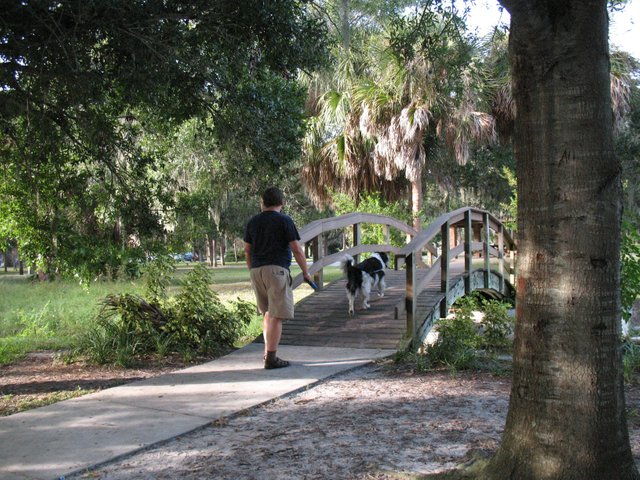
I almost always broke a sweat, even on cooler days, and I found that Nordic walking greatly enhanced my circulation and posture, even more than had yoga alone, which were improvements I hadn't even expected.
But what I liked the most was that, in addition to taking a lot of strain off of my knees and other joints, it really helped my neck and shoulders, which is where I tend to hold most of my tension. After Nordic walking for even a couple of miles, they were much looser and less tense, and I found that when I was actively Nordic walking, I needed and wanted chiropractic care less frequently.
In fact, I used my poles walking back and forth to the barn this afternoon, to let the goats out, and I was surprised yet again that my neck loosened up substantially even in that short distance.

Using the poles also gives you greater stability on rougher and/or hilly terrain, and my adjustable poles allow me to shorten them for going uphill, and to lengthen them for downhill trails, which increases my balance and stability even more.
I strongly recommend adjustable poles, especially for casual walkers, even though some experts recommend straight poles; just make certain that you are balanced well enough that all your weight is not on the poles. Leaning into them is fine, but you still want most of your weight on your feet and legs, not your hands and arms.
And, for obvious reasons, adjustable poles are a whole lot easier to take with you while flying.
As for the poles I use, I lucked into a pair of Speedstixx adjustable poles, made of lightweight carbon fiber on a closeout special, and I think I paid a whopping $35 plus shipping for them, despite their original price of around $140. I liked them so much that a year or so later, I searched online for months for a second pair, so that Marek could join me in Nordic walking. The Guinness hat was a gift from him to me.
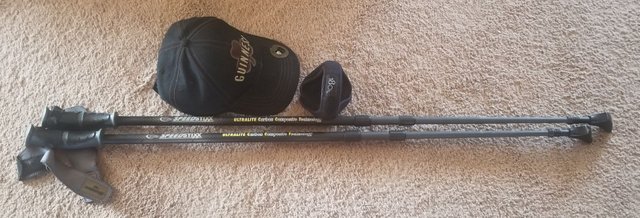
Unfortunately, the company is now defunct, and no longer makes poles, hence the closeouts.
Ultimately, Marek decided that he preferred walking without poles, which is fine with me, as it gives me a spare pair for that distant day when mine finally give up the ghost. But for now, my original pair are still going strong, and the only thing I've ever had to replace are the rubber tips or paws, for walking on pavement or indoors, which are readily available online.
Though, one of these days, a new pair of hand straps would be a nice upgrade as well.
Like most good poles, mine also came with wider baskets for walking on soft snow or sand, and if you take the tips off completely, the pole has a carbon steel tip meant for use on soft soil or grass, to give you better traction. But since the vast majority of my walking has been on asphalt or gravel roads and pathways, and the little bit of walking on other surfaces was short enough that I never bothered to change tips, the rubber paws are pretty much all I've used.
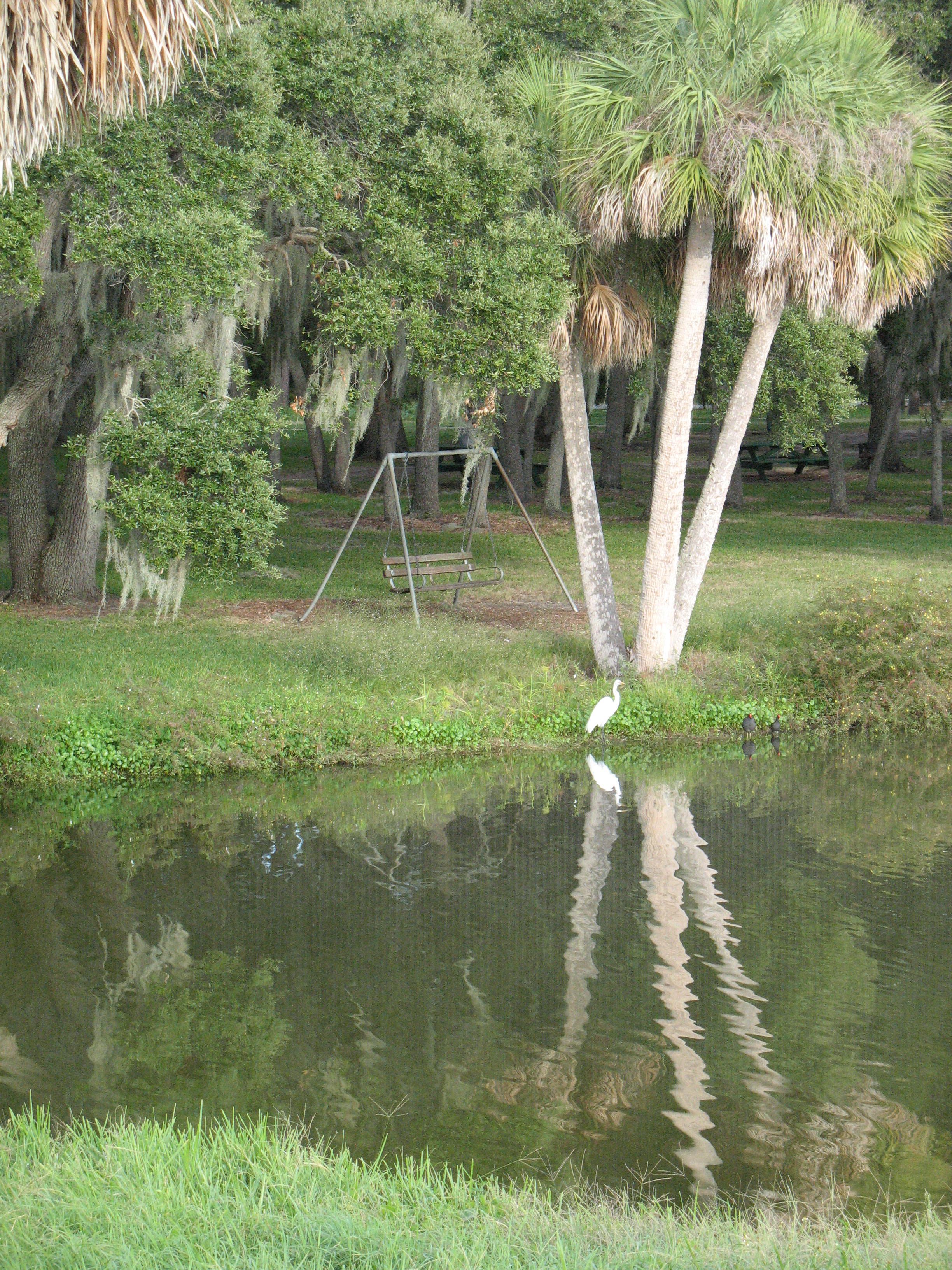
For those who already have an established walking routine, Nordic walking is an easy upgrade, and most people are quite surprised by how much more of a workout their body is getting, without making them much more winded or worn out after the fact.
A good set of poles is still relatively inexpensive, as sporting equipment goes, and ranges from about $150 to $300, though they can be much higher if you get into true pro quality gear. For most, a basic set of poles will do just fine, and is preferred until you've done it for a while, and know whether it is something you'll continue to do long term.
One excellent brand is Leki, made in Germany, which has been making them for far longer than I have been in the sport. Although when I took up the sport, the only poles I saw from them were fixed length aluminum, they have since introduced their “Carbon Traveler,” a three-part collapsible carbon fiber pole, similar in design to my Speedstixx.
Their Nordic walking poles currently range from USD $79 to $199; naturally the “Carbon Traveler” is the most expensive, at $199, though they also have a collapsible aluminum version for $149.
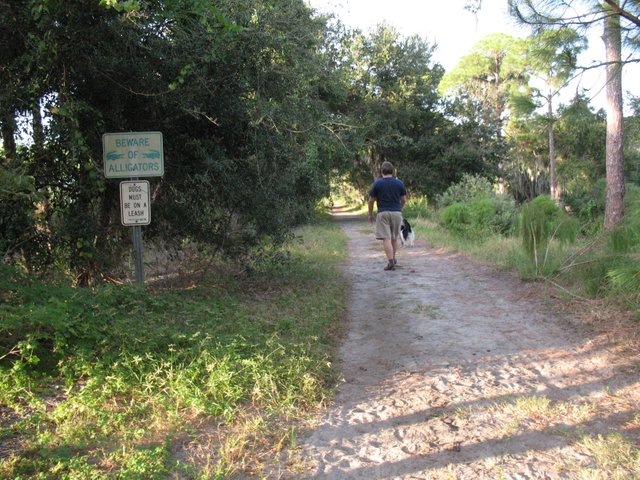
They have also since introduced quick-release gloves and hand straps, which are clearly superior to those on my Speedstixx, so if I were going to upgrade my poles, these are the poles I would choose.
https://www.leki.com/us/nordic-walking/poles/
For those who prefer fixed length poles, they are generally cheaper, though you have to careful to have them sized correctly, as incorrectly sized poles can lead to repetitive stress injuries. Here are some made in Lillehammer, Norway, a country that definitely knows quality Nordic walking poles:
https://www.amazon.com/Nordic-Walking-Collapsible-Poles-Lillehammer/dp/B0016688JM

More recently, there is an American company called Keenfit that makes poles, but I am not personally familiar with them, and so can't recommend one way or the other. The stats on their website look good, however, and they do offer free instructional videos.
They offer four sets of tips with each pair of poles: 2 sets of road paws, one set of trail paws, and one set of beach/tall grass baskets, plus the carbon steel tips on the poles themselves. Their also poles have reflective tape on them, offering greater visibility and safety for those walking in low light conditions, which is important if most of your walking is on roads.
http://www.keenfit.com/walking-poles/the-keenfit-advantage/what-makes-keenfit-walking-poles-special
Please note that, if you are actively hiking in more rugged terrain, you may be better off with trekking poles, rather than Nordic walking poles, which are designed more for flat terrain and rolling hills.
Although the poles look quite similar, there are distinct differences in design and durability, and it will pay in the long run to get the proper poles for the activities in which you are engaging. Most trekking poles are adjustable.

Leki also makes trekking poles:
https://www.leki.com/us/trekking/
Please note that the links above are not affiliate links.
There are a lot of Nordic walking and trekking poles listed on eBay, and elsewhere, starting at around $15, some of which even include shipping, but I frankly wouldn't trust most of them, as they are most likely made in China, regardless of where they are being shipped from.
Adjustable poles from China have a deservedly terrible reputation, as their locking mechanisms for adjusting the length of the poles frequently fail, and a lot of people have been injured while using them. Buyer beware.
Better to buy quality poles, from a well-known company who knows what they are doing, and is willing to stake their reputation on providing excellent quality at a fair price. Your health is too important to risk on potentially shoddy goods.

You can learn a lot more about Nordic Walking online, and I used to belong to an excellent and very active Yahoo group dedicated to Nordic walking; I learned a LOT from its members, but as a quick search turned up no hits, I'm guessing that the group may no longer exist.
Too bad – they were a valuable resource.
There is an American Nordic Walking Association, and doubtless others in other countries, and they have some decent information on their site, though the seem to be all about getting people to take classes and become certified, which isn't something I found all that appealing myself, largely due to the distances involved. They do now offer an online option, however, which is an improvement.
https://www.americannordicwalking.com/
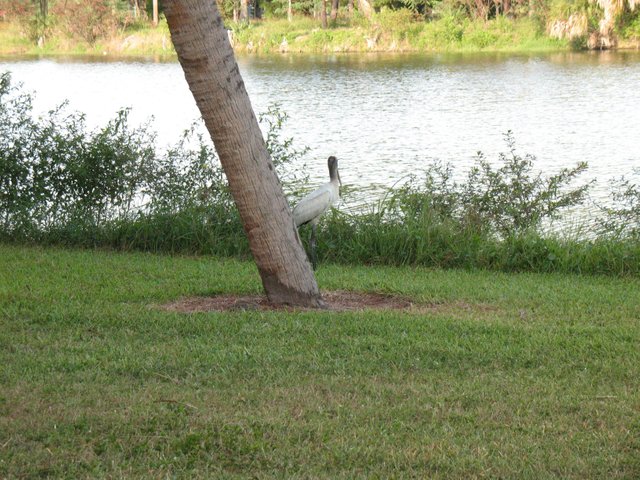
There are Nordic walking meetup groups listed literally all over the world, especially in the UK and mainland Europe, as well as a few in Australia, Malaysia and elsewhere, but again, finding one that is still active is key.
There are groups in the States as well, but as just one example, I checked out the San Diego meetup, and their last post was in 2010. There were no meetups I could find listed in Tennessee at all.
I'm taking it up again anyway, as I know first hand how effective it is for improving health and fitness, and since we have a great neighborhood for walking, which is hilly and gorgeous.
Now I just have to figure out how to manage the poles and a dog leash at the same time, at least when Marek isn't around.
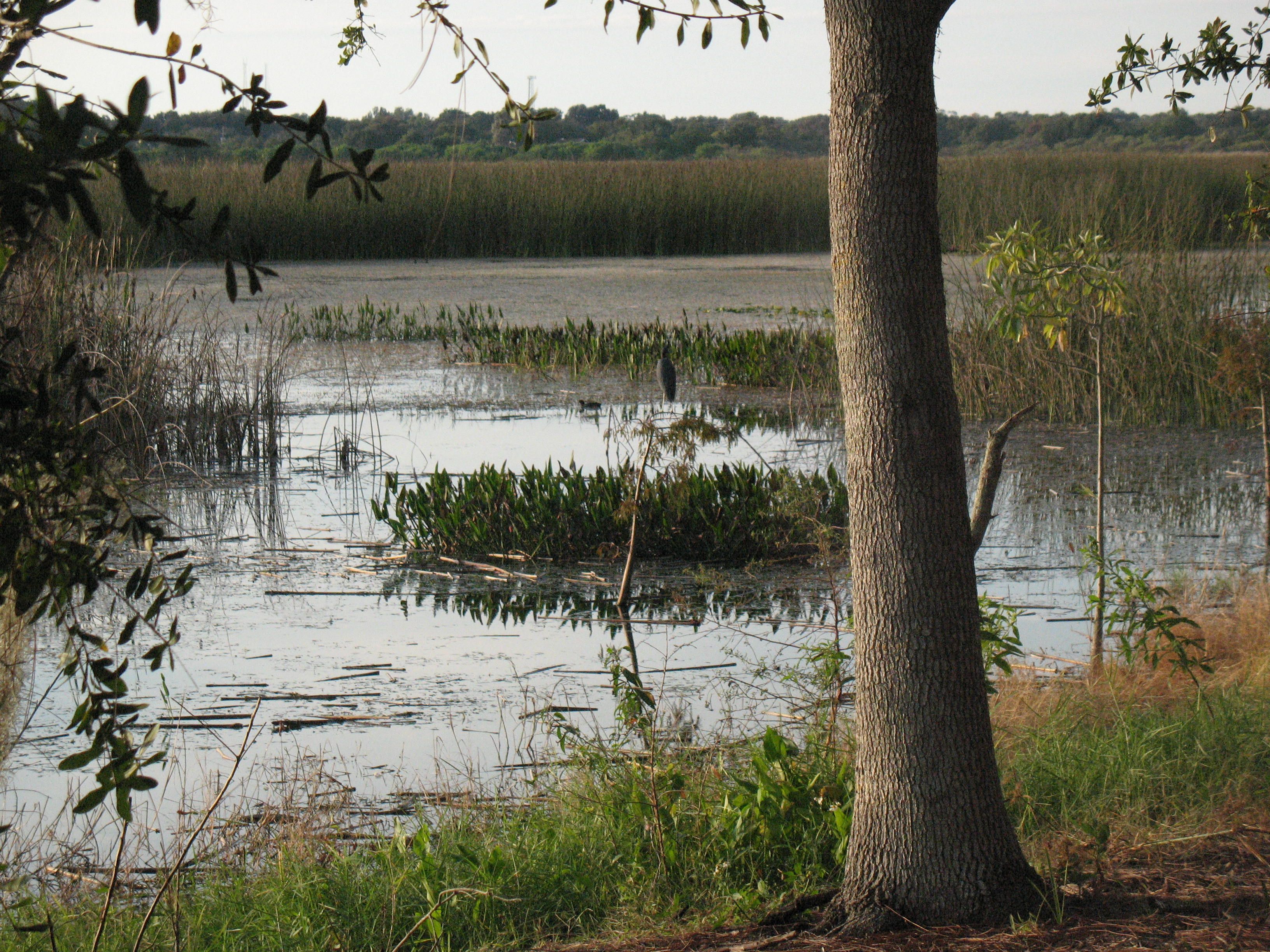
I am disinclined to attach the leash to my waist, as some beginning mushers do, because our dog is half Pyrenees and all goofball, and I prefer not to be suddenly dragged into a ditch or an electric fence as he chases down a squirrel.
I already have back issues, and don't want them made worse, especially not in an effort to get healthy.
Any suggestions for Nordic walking with a dog?
Any other Nordic walkers here on Steemit?
As usual, all words and images are my own.
The photos were taken in Lake Seminole Park, Seminole, Florida. Now you know why I went walking there so often.
The websites I am providing for additional information, and I have no monetary interest in any of the businesses to which I've linked.

Fixed length poles for me.
I've quit using the hand straps.
I still like my solitary tall wooden walking stick (which, sssh, is the handle off an old and beloved rake), but the poles do work more arm muscles.
Downvoting a post can decrease pending rewards and make it less visible. Common reasons:
Submit
Yes, I have a walking stick as well, a wonderful gnarled one worked from a length of spiraled vine that I dearly love, and use frequently.
But for actual fitness walks, I use my poles, because my back and neck feel SO much better when I do. Far better than any painkiller or muscle relaxant I've tried, and much better for my overall health.
Downvoting a post can decrease pending rewards and make it less visible. Common reasons:
Submit
@originalworks
Downvoting a post can decrease pending rewards and make it less visible. Common reasons:
Submit
Ski walking - me too! For ten years or more. Supposedly burns 30% more calories, engaging the arms. My rotator cuffs are usually shot, but I keep it up, those daily dog walks through meadow, wetlands, savanna, timber, and R.E.A.P land (just across the fence from us). The ground I walk is so uneven, with so much jumping of puddles, I'd never go without a pole Thanks for this article. Rarely do I see Americans walking with poles.
Downvoting a post can decrease pending rewards and make it less visible. Common reasons:
Submit
Yeah, there aren't enough of us, for sure.
I've made inquiries through the Meetup site, yet even for the Nashville area, I've yet to receive a single response. But I still have hope, hence why I wrote the article!
Downvoting a post can decrease pending rewards and make it less visible. Common reasons:
Submit